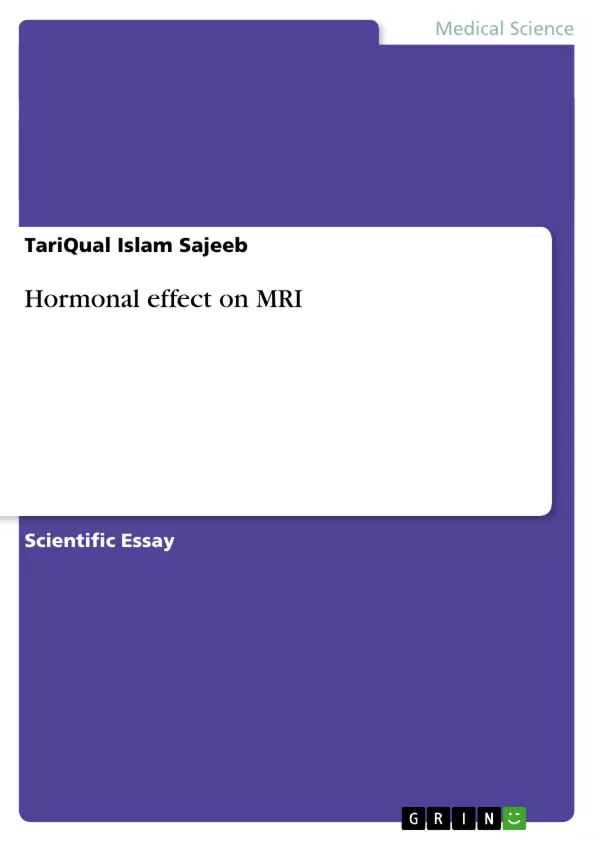At the age of 8-13 years all women face some sort of change in their life. The start of menstruation, changes of the body and mind (Ghai, 2012). Hormonal changes stimulate this change in them (Hall, 2010). One of the changes is the development of breasts (Hall, 2010). The breast is a body part, which differs in size and function in male and female bodies. The female breast contains the mammary gland which produces milk to feed infants (Boron & Boulpaep, 2012). Both men and women develop their breast from the same embryological tissues (Hall, 2010). In puberty different hormones especially estrogen works in breast development (Russo & Russo, 2008). On the other hand male hormone testosterone doesn’t have this function.
Inhaltsverzeichnis (Table of Contents)
- Introduction
- Hormonal Effect on MRI
- Hormonal influences on breast tissue during the normal menstrual cycle and importance on MRI
- What are BRCA 1 and BRCA 2 genes? Implications for a patient who has a harmful BRCA gene mutation, and how are such patients managed clinically
- Screening
- Prophylactic mastectomy
- Intra-capsular and Extra-capsular rupture and their MRI appearances
Zielsetzung und Themenschwerpunkte (Objectives and Key Themes)
This text focuses on the impact of hormones on breast tissue and the implications of genetic mutations, specifically BRCA 1 and BRCA 2, on breast cancer risk. It explores how hormonal changes affect breast density and the significance of these changes for breast imaging, particularly MRI. Additionally, the text discusses screening and management strategies for individuals with BRCA gene mutations.
- Hormonal influences on breast tissue during the menstrual cycle and their impact on breast density
- The role of MRI in detecting breast changes related to hormonal fluctuations
- The implications of BRCA 1 and BRCA 2 gene mutations for breast cancer risk
- Screening and management strategies for individuals with BRCA gene mutations
- Types and appearances of implant ruptures on MRI
Zusammenfassung der Kapitel (Chapter Summaries)
The introductory chapter provides an overview of the text, outlining the focus on hormonal effects on breast tissue and the role of MRI in breast imaging. It highlights the significant changes that occur in women during puberty and the role of hormones in breast development.
The second chapter delves into the hormonal fluctuations during the menstrual cycle and their impact on breast tissue. It examines how estrogen and progesterone influence breast density and the potential implications of these changes for mammographic screening. The chapter also discusses the importance of MRI in detecting changes related to hormonal fluctuations.
The third chapter focuses on BRCA 1 and BRCA 2 genes, their role in tumor suppression, and the consequences of mutations in these genes for breast cancer risk. It explores the management strategies for individuals with BRCA gene mutations, including intensive cancer screening programs, prophylactic mastectomy, and other interventions.
Schlüsselwörter (Keywords)
The primary focus of this text lies in the intersection of breast tissue, hormones, genetics, and breast cancer. Key terms and concepts include hormonal influences, breast density, MRI, BRCA 1 and BRCA 2 gene mutations, screening strategies, prophylactic mastectomy, and implant ruptures.
- Quote paper
- TariQual Islam Sajeeb (Author), 2013, Hormonal effect on MRI, Munich, GRIN Verlag, https://www.grin.com/document/272336



